Hello Survivors!
This is Geoff Keene, otherwise known as Zag, project lead of The Dead Linger. I’m here to talk about one of the most exciting things we’ve done all year. (Haha, get it?) …
There is a lot of speculation spinning around our “big changes” coming to The Dead Linger. Before that gets too far out of hand and someone burns down a building in panic, I’m going to dispel all the rumors in a handy question-answer format. This is definitely the biggest set of announcements (yes, multiple) since our Kickstarter. This blog post will go down in history. Not actual history, mind you, just… You know, my diary. That I write in.
To talk about my feelings.
…
This blog post will keep very tightly with our general rules for openness and transparency with the community. And that means some serious grown-up talk is about to go down. There are some pictures here, but without the information in between, they might be a bit confusing. Please read thoroughly so you understand the future of The Dead Linger.
(No, we are not cancelling the project. You can relax.)
(Note: All of the images in this blog are a work in progress and many of them are untextured and are lacking anti-aliasing. Trees are for scale.)
I predict three things will happen:
1) Some people will be upset, for awhile, anyway.
2) A lot of people will be super excited.
3) The end result will be lightyears ahead of where The Dead Linger currently sits.
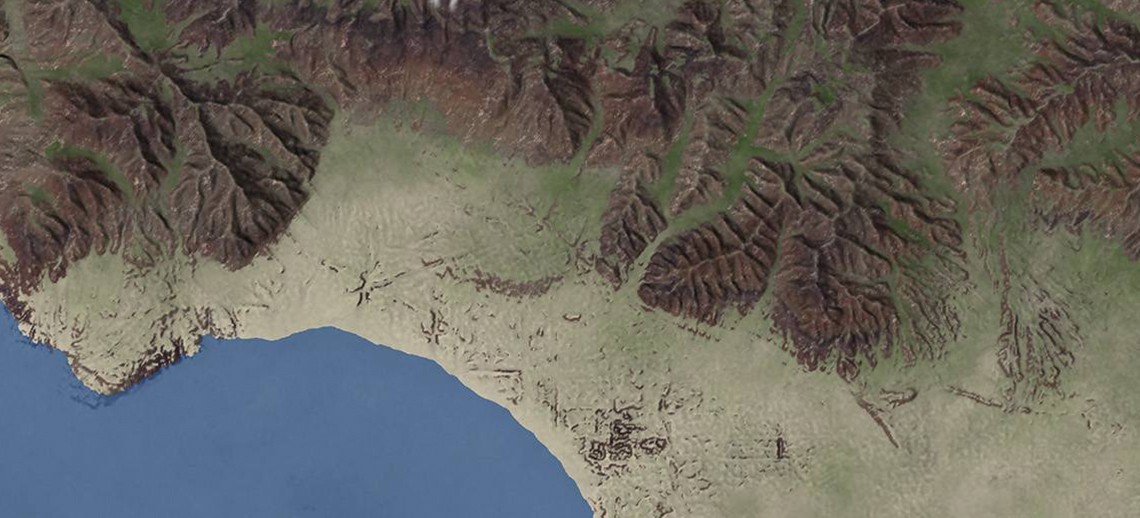
With this is mind, I hope you engage this blog post with an air of true optimism and a crystal clear view of our vision for The Dead Linger, and the steps we need to take to get there. Our intent with these big changes are to focus on what makes The Dead Linger the ultimate zombie survival experience, and know that these changes are done 100% in the interest of achieving that goal.
Let’s go over what gives The Dead Linger its identity and what makes it fun.
Is barricading an essential part of what makes The Dead Linger a great experience? How about free form welding onto vehicles and other surfaces?
Yes, and yes. All our long-term plans with barricading are super important to us.
What about fully explorable interiors?
Yes!
And zombies being a threat and found in enormous crowds?
Yes, this is a major part of The Dead Linger.
How about exploration? Never knowing what’s over the next hill or beyond that bend, or down that road?
Yes. Definitely.
How about randomized templates for cities, towns, farms, and forests?
Yes! We are allowing you to explore new places AND help make new places if you’re into that sort of thing. That’s a big part of TDL.
And what about the 32,000 * 32,000 world size? Being able to travel across a billion square kilometers? Is that a major part of what makes The Dead Linger what it is?
Actually… No. That is NOT what makes The Dead Linger what it is, but it certainly feels like it these days. And that’s a large part of what we’re here to talk about.
(Do not panic; we’re getting to what that means in just a minute!)
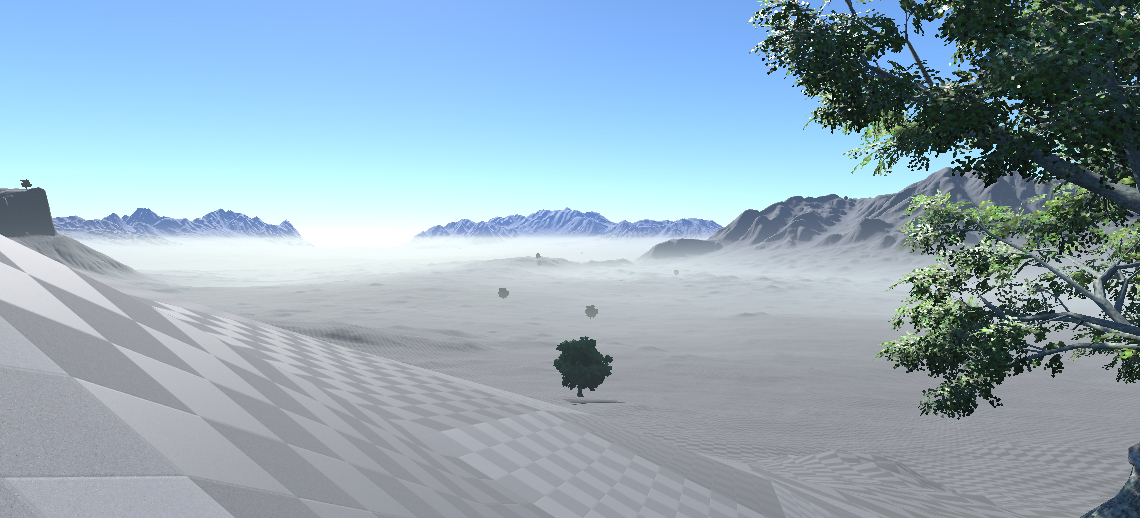
The Dead Linger is and has always been a game about survival in a massive world with fully explorable interiors, fun cooperative adventures, epic-scale exploration, climbing mountain tops, upcoming PvP warfare with zombies in the midst, and of course, an intuitive freeform barricading system. The planet-sized world was a Minecraft-esque endeavor to provide an ever changing and always unique world experience when you wanted it. Unfortunately, TDL is not built on a voxel-based system (like Minecraft) and procedural ‘infinite’ (can be infinite out to floating point error) worlds are actually insanely complex. We’ll talk about why TDL’s world (not a voxel world) is insanely complex, in just a minute.
We are still going to provide an ever-changing experience when you want it, but the way we are going about it is changing due to technical limitations and a general refocusing on what makes the game fun.
Before I explain what specific changes we are making, I have to shed some light on whywe’re making these big changes in the first place.
Complexity vs. Player Experience
Due to the way most game engines are designed, to make a multiplayer world with a shifting floating-point origin (“World Refresh” says hello) developers doing such efforts, especially with detailed physics and fully fleshed out interiors, are required to program secondary features inside the game engine in which they’re working. These efforts are not as simple as getting Minecraft’s voxel-based procedural worlds to work. (Or in an example brought up frequently on our forums; the voxel-based world of 7 Days to Die.) If we built it out of cubes, yeah, we could do it easy as cake, but it would look like it was built on… Well, cubes. That’s not something we want for The Dead Linger.
With our vision of The Dead Linger — a non-blocky chunky one — we have to have terrain that looks realistic, we have to have highly detailed structures, and we have to do it convincingly at every level, from the kitchen counter to a magnificent mountain. This feat adds anywhere from about five to ten times more work and effort than a preset world, which directly translates into time, which, unfortunately, directly translates into cost.
The bugs and issues we had been spending so much of our time fixing for 15c and previous builds are issues we would not have with a preset and hand-made world because we could tightly control LOD and how the world is presented. These are primarily issues directly related to massive world origin switching, which in Unity, requires custom-made terrain, custom LOD handling system that talks to a database and itdirectly leeches time, like a soul-sucking vampire, from fixing gameplay issues and creating gameplay features – the real substance of the game. (Things like adding vaulting, cleaning up zombie AI, adding new things to do, and so on.)
We estimate that the massive procedural world has directly taken more than 12 months of development away from furthering the content and gameplay of The Dead Linger. This dev time rolls out to over half a million dollars in general business, salary, and tool expenses, not including taxes and other expenses accrued during that time. That is not an exaggerated or embellished figure in any way, shape, or form. To some, especially large companies, it might not sound like much. To us, it’s a lot. It’s about half our budget so far.
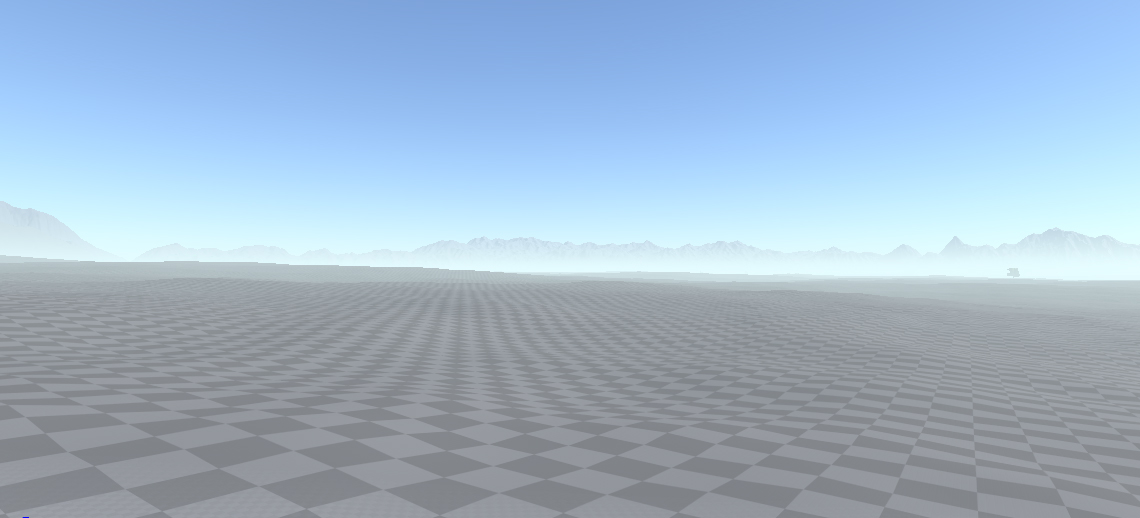
To summarize…
Instead of spending time shifting world origin, we’re now shifting our focus with TDL to narrow in on what makes it great and fun, and moving away from the technologically unstable and intensive algorithms that require so much effort and, in reality, give very little gain, to both us as developers and most importantly, you, as the players. The 32,000 * 32,000 kilometer world takes away from developing an experience that would be ten times more fun, and still yield in massive amounts of exploration and dynamically changing environments. And this means quite a few things are changing, the first of which being…
Change 1: Unity is OUT.
Unity is no longer the right choice for The Dead Linger.
Unity was the best (and most importantly, affordable) option for TDL way back when we switched to it from the Ogre rendering engine. It has some great tools and it supports the systems we need, though we’ve come to find out most of it is just not powerful or versatile enough for the other changes we’re going to make.
The short version is that Unity has not been able to help us achieve our goals, partly because of Unity, and partly because of what our goals have been.
I decided to omit a much longer version from this post because it is mostly discussing the shortcomings in Unity’s general systems, tech support and willingness to work with developers trying to do innovative things within the engine, as well as issues with Unity’s animation and rigging system, Mechanim.
So, Unity’s out. What’s in?
Change 2: An Unreal Decision
(Title shamelessly stolen from this great, highly relevant article from MartianCraft.)
Yes, while I do have the self-control of a preschooler on Christmas when it comes to the way I use twitter, it wasn’t until Chaoss “Leaky McLeakerson” Pierce tweeted publicly to the Unreal twitter that the rumors really started to fly. (I decided instead of firing him, I would just never let him live it down.)
So.. Yes, yes, and yes. We are switching The Dead Linger to the insanely fast and insanely powerful Unreal Engine 4. We would not be doing this unless we absolutely had to. It’s an intensive process, but nothing nearly as intensive as our first engine switch, which we’ll prove to you in this very blog post.
The benefits of Unreal are, in short, substantial. We can start with the licensing fee. Andy from the Project Zomboid team actually asked me on twitter to include some more information about why we switched and why it was a good decision earlier, but is no longer — so this one’s for you, buddy!
Unity, as of this blog post, is $75/mo OR $1000 for a commercial license (plus wanting to charge us a ton to upgrade to Unity 5), Unreal Engine 4 is now a mere $20/mo and 5% of the game’s revenue (after a certain amount.) That’s amazing! That deal was not available when we made our first switch to Unity, or we would most definitely have been on Unreal Engine from the start.
The rendering techniques, the scripting languages, the quality of content on their marketplace, the interaction between the editor and the development environment, and the documentation available for developers is unreal. It’s like a dream. And on top of that we now also have access to the entire source code for Unreal Engine 4.
Just to throw some numbers at you, the day-night cycle we built in Unity took us about 2 weeks for total implementation, to get to the state we have it in, with cool lighting and brilliant colors in the sky during sunsets. In Unreal, it took about 1 day. Chaoss basically knocked it out over a lunch break, and that’s extremely important to us as developers. (Not lunch, I mean time. But lunch too.)
Time is money, friends.
“But Ogre to Unity took ages!”
“I was just a child when you started, and I am now old and withered!”
There there. Have a hug, a nice cup of hot cocoa, and allow me to explain this switch as if I were a really badass ninja. Think of this switch as if we’re jumping from one rooftop to another rooftop. The buildings are there, the content is all still there (we don’t have to rebuild our art) but we do have to make the leap. We’re also NOT rebuilding some of our systems we have in Unity. We are lightening our pockets a bit to make the jump quicker, allow us to jump further, and to land safely on the other side.
In short, we are tossing a couple systems out and they will not be coming with us, so the switch will be immensely faster, along with much better tools. (See “Change 3″ for more information on what systems are not coming with us.)
Our first switch was not like jumping across a rooftop. It was more accurately climbing out of hole, and then filling the foundation, waiting for the concrete to dry, and then building the entire building from scratch, and then I guess climbing to the top of the stairs and walking through the roof access hatch.
That’s not very ninja-like, is it? Unless you’re like a … Construction worker. Ninja? Oh man, I gotta write this down! (DE2OUR confirmed.)
But with the seriousness of a carnival clown who came to work without his nose and squeaky shoes, we’re actually pretty far into already, which we’ll show you in like… twenty seconds, depending on how fast you read.
Keep scrollin’.
Is 15c still happening?
The next two sections will be like ripping off a really sticky band-aid. It’s gonna sting for a second, but the end result is a healed wound, with no trace of the wound’s existence.
So let’s do this like a band-aid.
15c on Unity is canceled in favor of Build 16 on UE4. But all of the benefits we had planned (i.e. sound overhaul) will arrive with the UE4 switch, alongside tons of other improvements, such as better graphics, better performance, fixed zombie rigging/animation, bodies of water, and proper, realistic, windy roads!
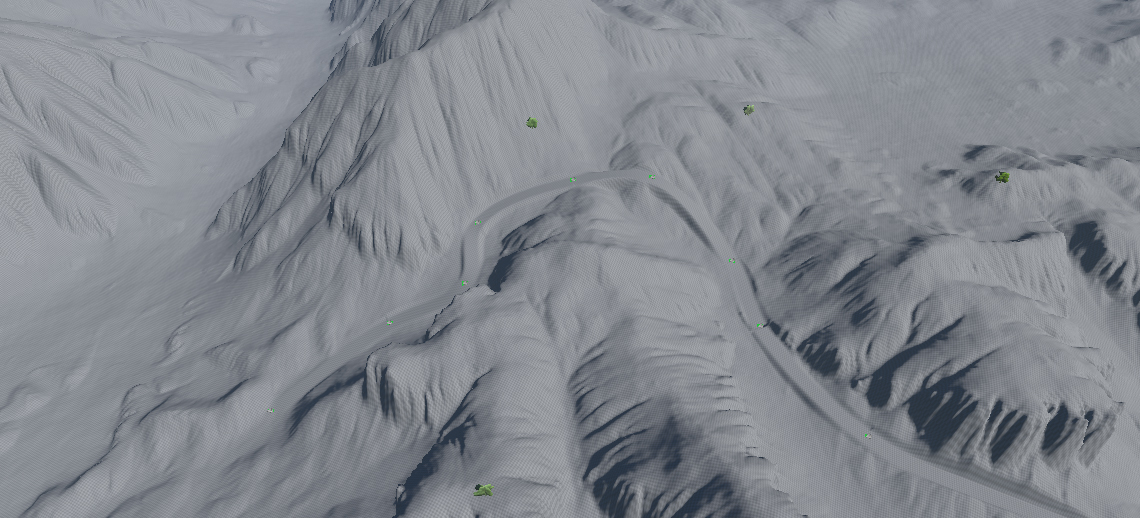
The next Steam update will be Build 16 – Sirens of the City, on Unreal Engine 4.The moment we locked in this decision we immediately stopped spending time coding for a build that would never see the light of day. We looked at options such as developing in unison until Unreal build caught up, but we decided all hands on Unreal would be the best and fastest solution.
The TDL experience in UE4 will be the experience we want it to be, not the one it’s had to be in favor of developing world generation. So… Let’s talk about that.
Change 3: The World Size
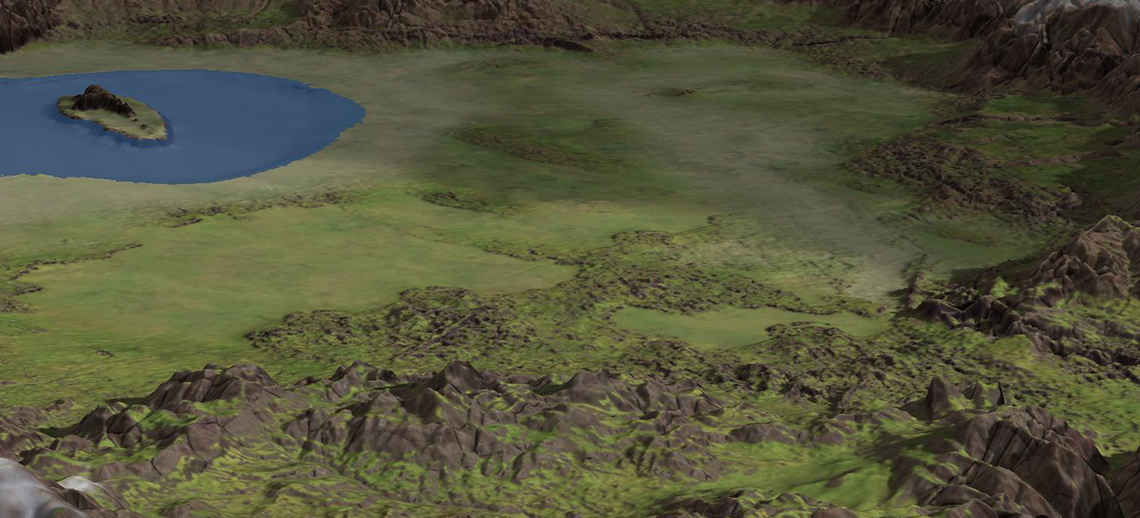
Before you panic, read all of the information below so you understand what we’rereplacing it with.This is where all that talk comes into play, about narrowing our focus back to the roots of what make TDL great. We are replacing the ridiculously massive area with a pretty massive area — a highly detailed 324 square kilometer map, currently nicknamed “Pepper Valley” (Internal development name.)
It looks a little something like this.
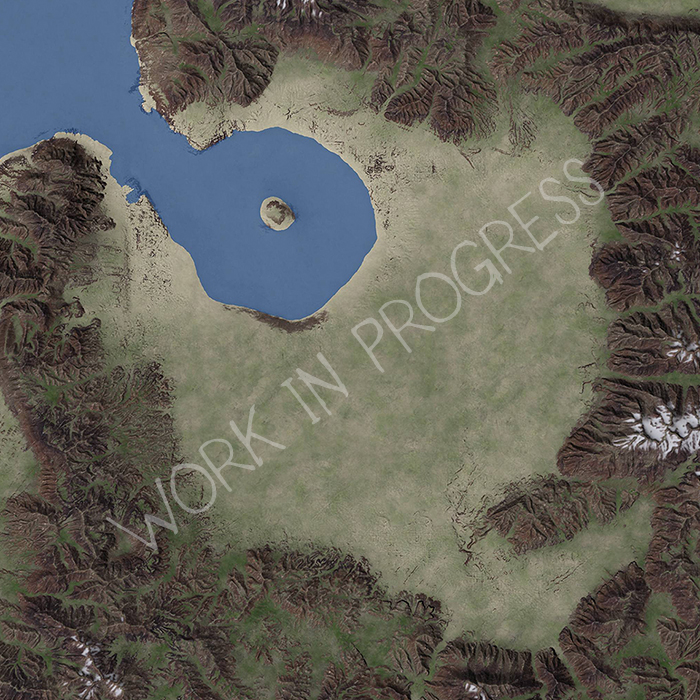
It will feature procedural layouts, full mountain ranges, interstates, a railroad system, rivers, and lakes, using a mix and match of real world heightmaps and hand-crafted terrain to create a completely realistic, unique, and convincing world. We will do a blog post or series of blog posts introducing you to this world and talk about its development some in the future.
So it’s still randomized every time I play it?
Yes and no. This is a really important part, so read carefully.
In Pepper Valley, the terrain, interstates, roads, lakes, rivers, and some of the environment will be static, meaning it won’t change, but large segments of the world, such as a town, city, island, neighborhood, or even a specific building lot, will be swapped out for other layouts each time you generate a new world, and these layouts will be creatable in Watertower.
The idea we’re currently working on is that you’ll fly around the map with all of the editable places highlighted. You fly to the one you want to edit and click on it, locking you in to that area. This means you’ll be able to take your favorite region from the world and edit whatever kind of scene into it. We’ll add more and more editable regions as we continue to develop the map.
Will there be other maps in the future?
We are fully set up to support it and we’d like to have many maps to pick from in the future. We are even looking into ways to connect them together so survivors can travel between them seamlessly during gameplay. We may even open up the Unreal Editor to allow community submitted maps, though we must warn you: Pepper Valley is extremely realistic and detailed, and quite large. It’s an effort being undertaken by many of our artists, and myself.
Still, we’d like to open up map creation for those who want to go much deeper than Watertower. My roots as a game developer started by making levels for Unreal 1, so I can definitely relate.
In short, as of right now, there will be one region, but the sky is the limit on how many regions we can add later.
Are we losing Roadmap features?
For the most part, no. About 5 items on the roadmap will be changing from their current form.
The only features changing and the only place we’re reducing scope on the roadmap will be stuff directly related to procedural terrain generation and the 32k by 32k km world. In fact, this change is what will enable us to fully achieve the scope required for the rest of The Dead Linger. (Read that sentence again – it’s quite literally the most important sentence in the entire blog post.)
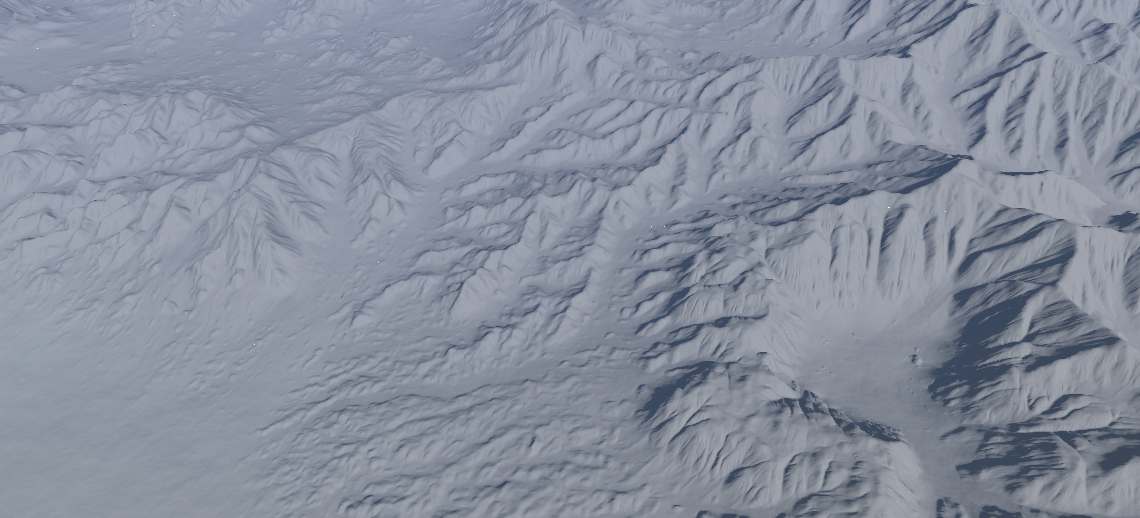
(And yes, the mountains and their canyons are fully explorable and climbable.)
Is the gameplay changing?
No. Well, also yes, but for the better! A lot better. The first person experience is getting overhauled and getting smoother. Every action you do will have more polish, more care, and tighter systems revolving around it.
Will this mean less crashes and better framerate?
Oh, hell yeah. And it also means the game is about to get super, incredibly gorgeous. It only takes a cursory glance on google to see what sort of visuals Unreal Engine 4 is capable of.
Will it be 64-bit?
Yes.
Any other hidden benefits with this switch?
Yes! There are loads of benefits, from physically-based rendering to a much better animation system. This also means Workshop patrons will be able to much more easily make content for the game and test it out in the Unreal Engine. The change also means skins for zombie variants (i.e. Fat Bob Zombie) will be much easier to create and test. We’re looking forward not just to using the engine ourselves, but for the community content creators to get their hands on its raw power.
Will the map be totally done when 16 is released?
No, but we’ll be constantly improving it with every update, and we’ll start integrating the community’s Watertower layouts as soon as humanly possible to maximize the variety you can encounter every time you create a new world.
Why would you get rid of the super-massive generated worlds I could never possibly explore 10% of in ten million human lifetimes?
Honestly, it’s because I hate you. It’s very personal that way. I actually sat down with the team, and I was like, “Man, you know what would really piss that one guy off?” And there you have it. That very evening we switched to UE4 and decided to drop the 32,000*32,000 km world gen.
Or maybe it wasn’t like that at all. How would one know we didn’t spend months fighting against Unity’s systems and finally deciding not only that we had to slightly decrease scope within our resource-budget, but also switch to a highly professional and incredible engine to properly achieve our goals in a very quick and beautiful fashion? How would anyone know?
They can’t.
That’s between me and my diary.
Last question… What’s next?
We’ll be revealing more of the map and showing off some gameplay video as soon as possible. The teases in this blog are not quite what we wanted to show off first, but you guys made it clear to me that you want information on what’s changing as soon as possible, so we decided to cut some stuff from the blog to make it happen. The next few blogs should be some stuff showing off Pepper Valley’s development history and design, and some of our multiplayer network testing as it comes along. We already have clients connecting to a host and moving boxes about, in just a few short days, so things are looking great.
We’ll keep you in the loop over the entire course of January, and maybe a little into February. (hint, hint)
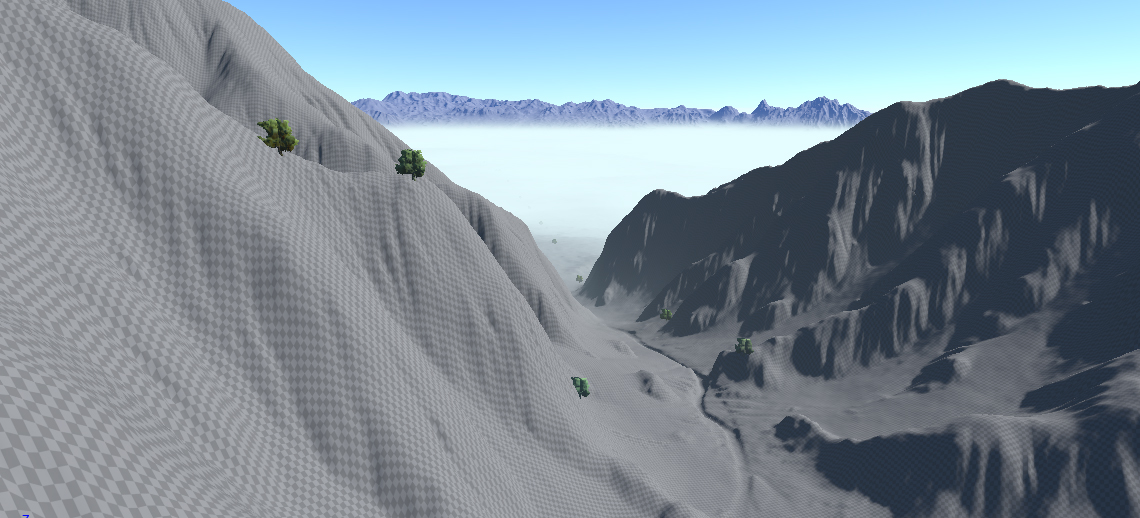
Prepare your packs and sharpen your blades. The next update is gonna be unreal.
Er… Unreal™. See you soon!
Linger on, Survivors!



AWESOME YEEEAAHHH